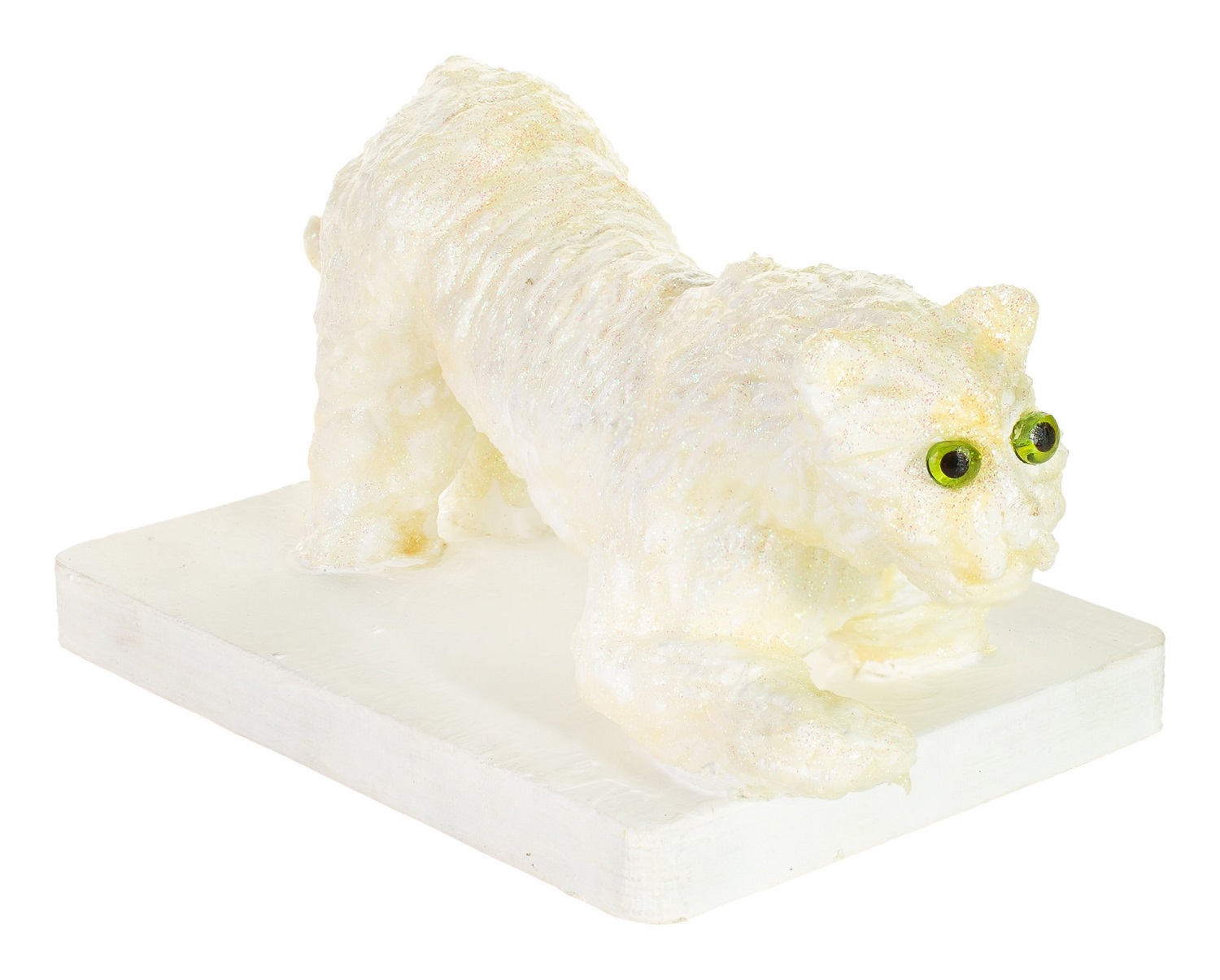
The Zarya Center for Contemporary Art will show a selection of works from its collection, built up over the past 5 years of the artist residency program.
Since the moment it launched in December 2014, the Zarya artist-in-residence program has welcomed artists from 17 countries to realize more than 80 proposals, dedicated to rethinking the local geopolitical, social and cultural landscape. On March 2, the Zarya Center for Contemporary Art will open the exhibition “IN RESIDENCE: From the Collection of Zarya Center for Contemporary Art,” which selects from the creative proposals and art works created by artists during their residencies.
Throughout its tenure, the Zarya Center for Contemporary Art has seen its mission as increasing Vladivostok’s significance as a point on the map where creative life is flourishing. Zarya strives to serve as an independent platform for creative production and a professional dialogue about art. The artist residency program has become a key instrument for attaining those goals. Thanks to the open format of the residency, Zarya has managed to bring together the resources of many artists and researchers to unpack the manifestation of the local landscape within the discourse of contemporary art. Among those who have participated in the residency and whose works will be on display in this exhibition are Dmitry Bulnygin, Irina Zatulovskaya, Olga Kroitor, Sergey Shutov, Hong Jinhwon (South Korea), Fabian Knecht (Germany), Elizaveta Konovalova (Russia, France), Alexander Morozov, Natalya Pershina-Yakimanskaya (Glukyla) (Russia, the Netherlands), Elena Redaelii (Italy), Ма Haijiao (China), Sarah Hillebrecht (Germany), Sarawut Chutiwongpeti (Thailand), the collective, Searching Utopia (Finland) and many others.
The first exhibition from the Zarya collection gathers works that are dedicated to the Primorsky Krai in one space in order to forge new links between the artistic approaches of the residents to the study of the territory, culminating in the creation of a new “portrait of the place.” The perspectives from which the artists consider Vladivostok and the Primorsky Krai are not just aesthetic; in their projects, the artists raise many important social, historical and ethical questions. Among the selections are works reflecting on the theme of the specific features of the region’s natural landscape, the history and memory of the Gulag, the history of the Zarya factory and the women who once worked the sewing machines, the contemporary urban environment and social boundaries.
The presentation of this collection results not only in the spectacular display of the results of five years of work, but also in a means to evaluate those results critically. The audience can get to know this portrait of Primorye, created by Russian and international artists alike, up until May 26.
Exhibition Curators: Alisa Bagdonaite, Andrey Vasilenko, Adel Kim
Participating Artists:
Dmitry Bulnygin (Russia), Sarawut Chutiwongpeti (Thailand), Tatyana Efrussi (Russia, France), EVOL (Germany), Alexander Florensky (Russia), Olga Florenskaya (Russia), Ма Haijiao (China), Leif Holmstrand (Sweden), Sarah Hillebrecht (Germany), Hong Jinhwon (South Korea), Fabian Knecht (Germany), Elizaveta Konovalova (Russia, France), Olga Kroitor (Russia), Sasha Kurmaz (Ukraine), Lyokha G. (Russia), Alexander Morozov (Russia), Anastasia Potemkina (Russia), Natalya Pershina-Yakimanskaya (Glukyla) (Russia, the Netherlands), Elena Redaelii (Italy), SASHAPASHA (Russia, Finland), Sergey Shutov (Russia), Anastasia Tsayder (Russia), Mikhail Zaikanov (Russia), Searching Utopia (Finland), Irina Zatulovskaya (Russia).
%20-%20%D0%BA%D0%BE%D0%BF%D0%B8%D1%8F.jpg)
SEPTEMBER, 3 – OCTOBER, 1 / SMALL EXHIBITION HAL
Andrey Dmitrenko's latest exhibition takes its name from lyric poetry. In the Russian version of the title, the use of the informal personal pronoun “you” connotes a certain proximity, and even intimacy to the subject, but the addressee itself remains unknown.
“You” could be the viewer, who navigates the exhibition, slipping into contemplation and losing themselves for a moment, only to be brought back by the sound of their own footsteps.
“You” could be the work, which always brings its own intonations and “noise” into the space around it.
The artist prefers to work in mixed media, contrasting the textures and characteristics of various materials, from metal, to textiles, to paper. And these contrasts always have a moment of chance about them: it is never exactly clear where the artist’s hand has intervened, and what are just the natural properties of the material. In any case, with his interventions the artist emphasizes these properties, making them resonate, until that they literally become “noise.” The viewer is then called upon to continue the artist’s process through their contemplation of the work.
The transitions from one material to another can also be seen as a means to shift from seeing to listening. Sound is one of the main components in Dmitrenko’s works. The viewer might see the fragments of striped fabrics used in some of the artist’s canvases and connect them to his or her own experiences and memories of bedsheets. In this sense, the artist “activates” a kind of sleep mode, like the curious phenomenon when one is dreaming, and auditory sensations trigger images.
The dimensions of the works are often not very large. They do not presume to completely take up the space. Their status is never clear: on the one hand, they are, of course, images, but on the other, they are objects with an unknown origin and an undefined function. They do not impose themselves on the viewer, who must still discover them, recognizing them as works of art and locating them within “this little landscape.” If we think about the function, then Dmitrenko’s works are like tuning forks – instruments for measuring the intensity of sound in an enclosed space.
With their horizon lines and two or three planes, the suite of works from the “Storm” series can be considered as landscapes – albeit, very unstable and provisional landscapes. All the fits and fury of their internal storms seem either to have already passed, or, conversely, to constitute the very substance of the storm, not in the visual sense, but in terms of the intensity of the experiences.
If we are to speak of tradition, then the works of Andrey Dmitrenko pick up on the history of music within minimalism – the experiences of organizing sounds of different origins, as well as integrating these sounds into a musical fabric.
Kirill Svetlyakov

JUNE, 22 – SEPTEMBER, 1 / SMALL EXHIBITION HALL
Morskaya group art exhibition will open June, 22 at Zarya Center for Contemporary Art as a part of the international V-ROX EXPO festival. Titled after the legendary first album by Mumiy Troll band, it features 28 artists, selected by the show curator – Moscow-based artist Dmitri Aske, the V-ROX EXPO organizing committee and representatives of Zarya CCA.
'Morskaya' art show is paintings and graphics, installations, photos, spacial sculptures – they all, just like many songs by Mummiy Troll, embody spirit of the Russian Far East. Most of the artists are based in Vladivostok – that's why a can of ‘Milkis’ in their works fits right in, peonies consist of shells, and a seagull made of mosaics looks so arrogant. Photos of landscape show the less obvious and touristic of Vladivostok spots, offering a personal, insider’s look at the city; the sound for interactive installation 'Listen To The Sea' was recorded in a very specific location, too – Shamora beach. ‘Portrait of a Captain’ is a collective image of all things that make a true seadog – or the way people tend to think of them. It is yet to be proven if Vladivostok offers winter surfing, but the Far Eastern artists found an honorable place for it in their works, just like for the sea – Vladivostok’s most formative site.
Ilya Lagutenko, V-ROX EXPO curator: “V-ROX EXPO is a laboratory of creative ideas, an opportunity to not only introduce new music to the city but to get people involved in a cultural dialogue. Morskaya was conceived first and foremost for Far Eastern artists. I sincerely wish for Vladivostok to become a permanent artistic pot where all kinds of creative ideas bear fruit in new projects, uniting people, expanding opportunities, and offering a glimpse over the horizon”.
Dmitri Aske, Morskaya exhibition curator: “For the exhibition we selected works that fit within the given theme and represent a wide array of techniques and styles employed by Far Eastern artists. I was curious to see all the submitted works, to get an idea of what people create in this region. I hope that the art show and V-ROX EXPO as a whole, will be able to inspire people and get creative energy flowing, in one way or another. This is exactly what I am hoping for myself for this trip to Vladivostok”.
Specially for V-ROX EXPO Aske will deck Zarya CCA with his ‘Turning Point’ – a piece on inner stuggles and hardships of choosing a way when facing important life decisions.
Morskaya Artists
Vladivostok: Dmitrii Chovgan, Andrey Chugunov, Andrey Dmitrenko, Irina Drobot, Alexandra Epstein, Vladimir Ershov, Vasiliy Galaktionov, Lekha Gominid, Lesya Ilyonok in cooperation with Julia Sufianova and Daria Litvinenko, Ilya Kantakov, Kirill Kryuchkov, Masha Lamzina, Maksim Listopadskiy, Dmitriy Luchinin, Appolinaria Ravnoapostolnaya, Daniil Sakharov, Pavel Shapovalov, Viktoria Sharmankina, Tatiana Silverstova and Alvina Verner.
They will be joined by artists from Khabarovsk (Yana Jan-Sha, Adele Sakhnevich, Yaroslava Verner), Moscow (Anna Lyalina), Ussuriisk (Evgeniy Korotkov) and Fokino (Natalia Khristenko).

22 июня в Центре современного искусства «Заря» в рамках фестиваля V-ROX EXPO откроется коллективная выставка «Морская». За два месяца поступило множество заявок с проектами, объединенными темой «Морская» – по названию альбома группы Мумий Тролль. В итоговую экспозицию были отобраны работы 28 авторов.
Это художники из Владивостока: Dmitrii Chovgan, Irina Drobot, Альвина Вернер, Василий Галактионов, Леха Гоминид, Андрей Дмитренко, Владимир Ершов, Леся Ильенок в соавторстве с Юлей Суфьяновой и Дарьей Литвиненко, Илья Кантаков, Кирилл Крючков, Маша Ламзина, Максим Листопадский, Дмитрий Лучинин, Апполинария Равноапостольная, Данил Сахаров, Татьяна Сильверстова, Андрей Чугунов, Павел Шаповалов, Виктория Шарманкина и Александра Эпштейн.
Кроме того, в выставке примут участие авторы из Хабаровска (Ярослава Вернер, Яна Джан-Ша, Адель Сахневич), Анна Лялина из Москвы, Евгений Коротков из Уссурийска и Наталья Христенко из города Фокино.
Мы поздравляем всех художников и благодарим за то, что они откликнулись, ждем на открытии!
Изображение: «Зимний серфинг», Александра Эпштейн (Владивосток).
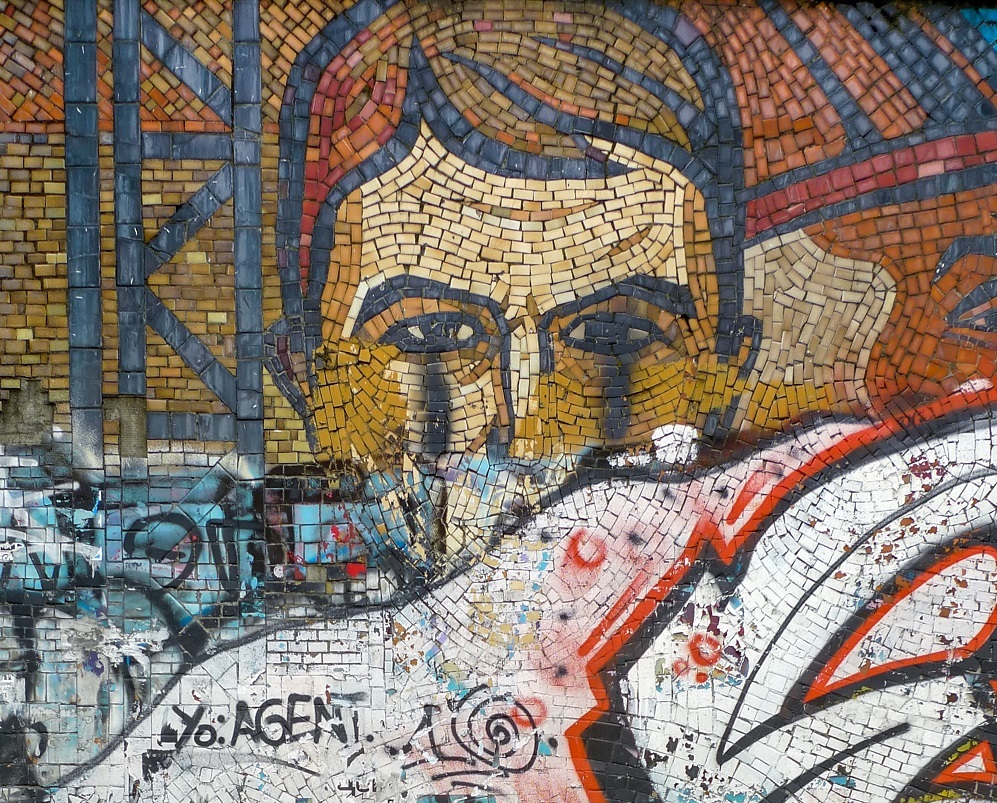
1–16 JUNE / SMALL EXHIBITION HALL
VERNISSAGE: 1 JUNE / 17:00
The Zarya Center for Contemporary Art presents a new exhibition dedicated to Vladivostok and its main components, deconstructing and reconstituting the theme of the city through different media, including documentary photography, painting and sculptural objects.
The morphology of Vladivostok seems to come down to three basic components: shrubbery and trees; walls of brick, concrete or plastic; and cars – specifically those of Asian origin. The stark contrast between the natural, the architectural and the technological is what distinguishes this “city of the triumphant motorist” in the Russian urban landscape. The photographic mini-catalogue presents the formula for typical city views according to the scheme of “tree-wall-car,” laying bare the mechanisms of the formation of both the urban environment and our perception of it.
A different type of urban “wall” can be found in the three mosaic stelae on Kalinina street, courtesy of artists Alexey Onufrienko and Anatoly Katsuk. Commissioned in 1980 by Viktor Lomakin, the First Secretary of the Primorsky Krai’s Communist Party, these monumental panels were dedicated to the workers of Primorye: the sailers, the builders, the fishermen. Today these monuments of Late Soviet Modernism are in a state of decay, with crumbling smalt and a bare concrete brick foundation, witness to the dying and shedding of the next “cultural” layer: graffiti.
Within the exhibition space, paintings stand in for urban flora, as the abstract yellow-green-pink compositions of Pavel Shukupov, a member of the artist’s association “33+1”, are layered into the crown of a large tree. Appearing like “nails” of the exhibition are objects fashioned from the expendable materials from the tire shops “decorating” the whole city but today viewed as undesirable exiles (it is now prohibited to use these rubber products in city courtyards). In this way, the urban fabric of the Primorye’s capital city accumulates into a complex puzzle, a layer cake of historical meanings and their obsolescence, initiatives and indifference, daily needs and adaptations, nature and civilization.
Members: Anya Petrova, Pavel Shukupov
FREE ADMISSION
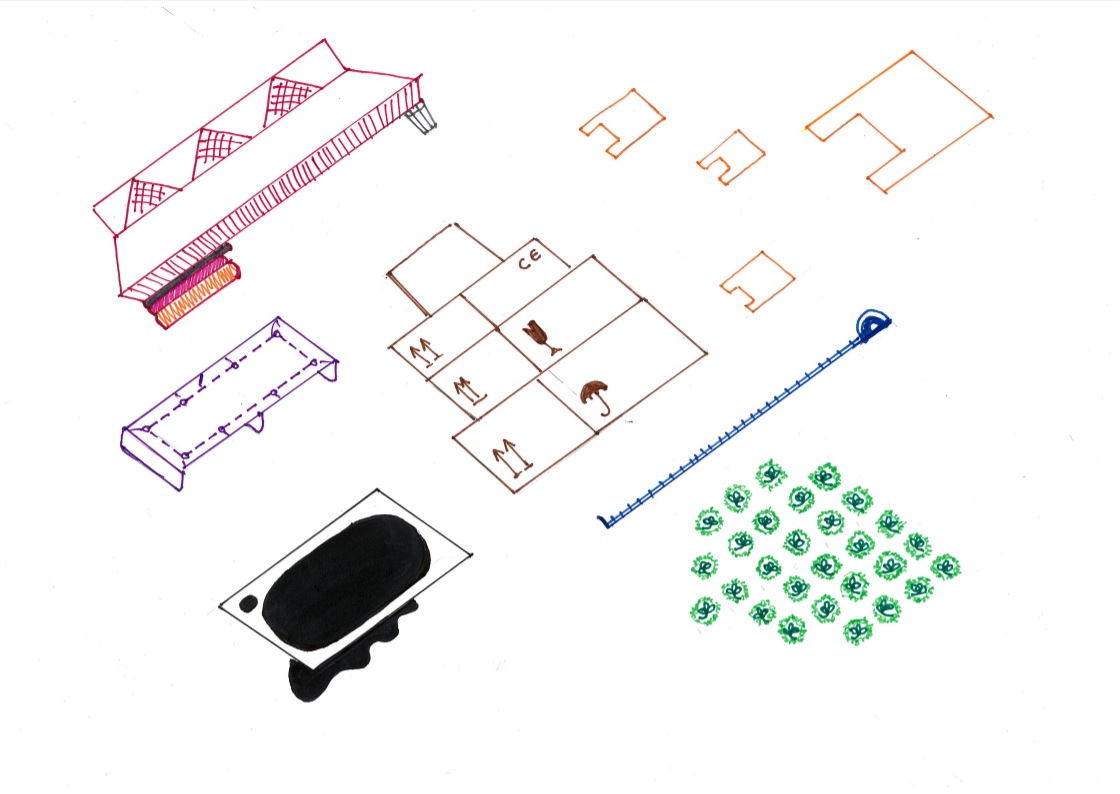
10-12 МАЯ / ЧИТАЛЬНЫЙ ЗАЛ / 12+
ВЕРНИСАЖ: 10 МАЯ / 19:00
Очередное взаимодействие участников Владивостокской школы современного искусства результирует в тотальную инсталляцию, демонстрирующую коллективное художественное высказывание на тему современности как таковой, при котором совместно делится (и проживается) настоящее время. Восприятие этого настоящего как категории не только временной, но и топологической, формирует наше отношение к месту, в котором мы находимся. Для визуализации феномена был выбран образ съёмного жилья как транзитного модуса, в котором сосуществуют не только студенты и резиденты открытого порта Владивосток, но и люди работоспособного возраста большинства крупных городов мира. Поводом для исследования темы служит как частный опыт людей из окружения участников ВШСИ, многие из которых живут в съёмных квартирах большую часть сознательной жизни, так и история самой школы современного искусства – объединения, которое уже четыре года существует во Владивостоке без фиксированного официального помещения и в своей выставочной практике часто обращается к формату квартирника.
Посетителю инсталляции предложат порассуждать о том, что такое «дом» или «свое место» в наше время сокращенного настоящего, и как следы чужого пребывания и диктатура старой мебели становятся самостоятельными акторами. Предметы быта в наших квартирах, которыми мы никогда не обладаем до конца, и домашние ритуалы ставят нас в невидимые сетевые отношения, а помещенные в выставочное пространство, они, через ощущение моментального (и сентиментального) узнавания, связывают зрителя с его повседневным опытом, давая возможность произведению художников в очередной раз стереть границу между обыденностью и сакральностью. Самостоятельная жизнь вещей, постоянная отсрочка ремонта в сдаваемой квартире, накопительство и фиксация в прошлом, отношения власти и подчинения в коллективном сожительстве, окружение себя материальными символами стабильности, невольный вуайеризм и свидетельствование соседской интимной жизни – лишь некоторые смысловые якоря инсталляции.
Жили-проживали: Кристина Александрова, Женя Барабаш, Яна Гапоненко, Марина Давидович, Денис Ерастов, Анастасия Есауленко, Елизавета Кириллова, Кирилл Крючков, Татьяна Нельмина, Сергей Цынгунов, Олеся Чернявская, Катя Шрамко.
ВХОД СВОБОДНЫЙ
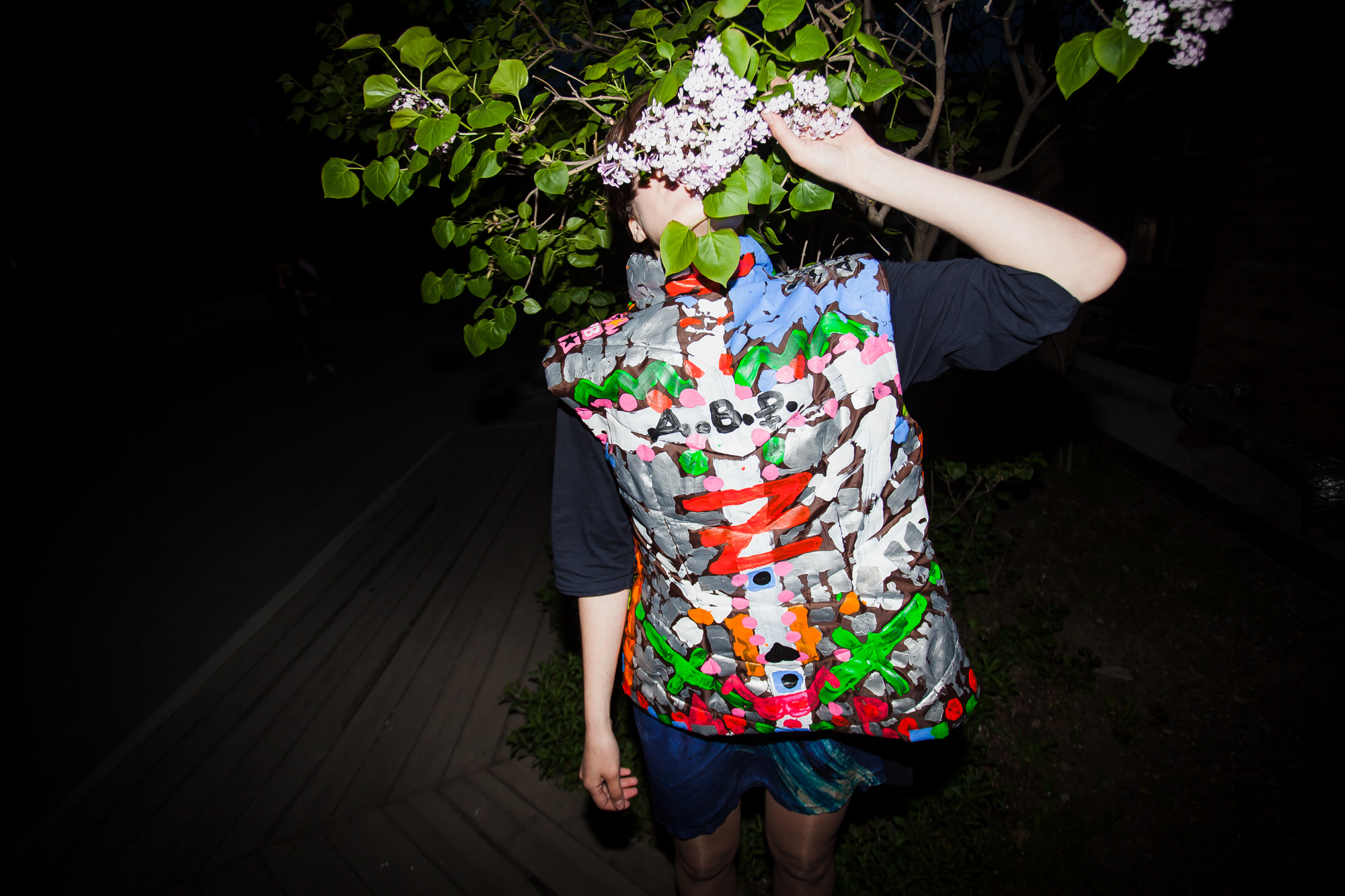
2 MARCH – 26 MAY / SMALL HALL
On the first day of Spring, Zarya Center for Contemporary Art will present “The Rites of Spring,” an interactive project from the Vladivostok punk-romantic collective, DVR – Dalnevostochnye Razluchnitsy (“Homewreckers of the Far East”.)
Founded in Vladivostok in 2016, over the course of its existence the group has developed a synthetic practice, combining music, poetry, sound, performance and actions. DVR’s performances have taken place in museums, clubs, house parties, garages, city streets and an aquarium. Each performance is held in collaboration with poets, artists, musicians and even strangers, who find themselves temporarily becoming a “homewrecker.” With this kind of fluid composition, the group creates a stream of hybrid ecstatic acts.
For DVR, the key narrative instrument is the aesthetics of collaboration. The main stylistic feature of their works is the fluidity of the process, an accent on the “here and now” without relying on a story, a precise script or finished form. This is why the exhibition begins with a blank page in an empty space, which will gradually fill with events, new connections, artifacts, and myths. Communication within this micro-community will take the form of public discussion, involving any interested audience members in the creation of the project, making them an integral part of what’s going on.
Another defining feature of “The Rites of Spring” is its cyclical structure. The exhibition breathes like a living organism, changing from cycle to cycle. Each cycle is ushered in with a preparation period, an event and an exhibition within the exhibition, in which the exponents are the traces of the past event. After this, a new cycle begins, keeping to the same approximate script. Audience participation – whether intentional or spontaneous – is obligatory.
Instead of working with traditional exhibition formats, the artists plan to create an experimental operetta, encouraging the audience to abandon the role of the passive observer and join the fray. In this way, “The Rites of Spring” is designed as a call to arms for all those in the spheres of play, art and music, inviting them to become a Homewrecker of the Far East.
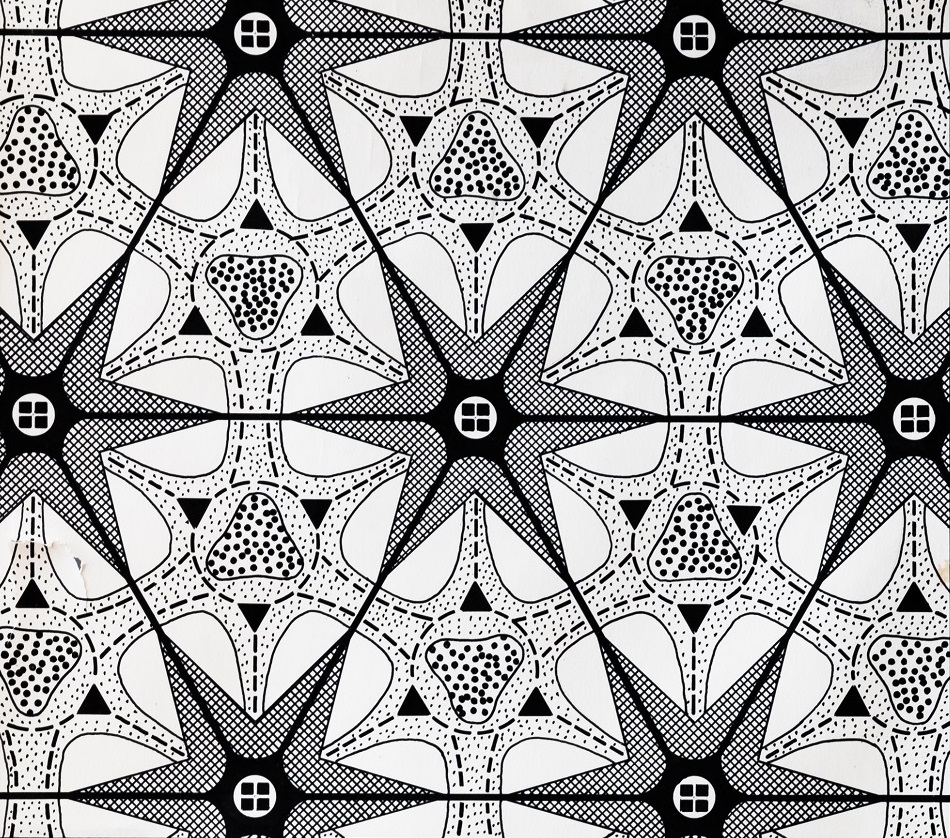
On October 10, the Zarya Center for Contemporary Art will open the interdisciplinary exhibition project, “Metageography – 3: Orientalism and Dreams of Robinsons.” This will be the third installment of the curatorial project by Kirill Svetlyakov and Nikolay Smirnov, “Metageography: Space – Image – Action,” which was developed especially for the Far East and realized in collaboration with the State Tretyakov Gallery. The exhibition is free of admission and will remain on view until January 13, 2019.
“The theme of metageography that is developed within this exhibition is one of extreme importance for Zarya: we are always telling both our compatriots and foreign visitors where we are located, the characteristics of the city and the region,” explains Zarya CCA curator Alisa Bagdonaite. “Now, in opening this exhibition, we have the opportunity to demonstrate a wide range of methods of talking about space and our location within it. The answer to the question ‘Where are we?’ lies not only in the geographical coordinates, but also in the intersection of a variety of different relationships – not only spatial, but also temporal and the social, which we ourselves determine. In the context of Zarya’s global mission, the organization of a cutting- edge, powerful cultural route, the project “Metageography – 3: Orientalism and Dreams of Robinsons” is a critical step to a deep and comprehensive understanding of this “place” and the beginning of an extensive dialogue, which will be supported by the parallel exhibition, “One Northeast” and the accompanying discussion, “Towards a New Politics of the Geographical Imagination.”
“Metageography: Space – Image – Action” brings together the insight and experiences of geographers, artists and historical figures hailing from different epochs spanning from 1920 until 2000 The main section of the exhibition features depictions of the space of Russia, which here will be supplemented by bits of local color that emerge through the spatial representations, myths and heroes of Primorye. The new interpretation of the exhibition also includes a series of international artists living and working in Hong Kong, Shanghai, London and Paris. Another section of the display is almost entirely dedicated to the local context, fixing on the figure of the Artist-as-Robinson Crusoe.
“The context of Primorye and its artistic scene has shaped the character of this version of the project rather considerably. The focus is now trained on the concepts of orientalism and exoticism,” explains one of the exhibition’s curators, Nikolay Smirnov. “The Primorsky State Picture Gallery and the Prishvin House Museum outside Moscow have contributed a new series of objects, especially for this installation. This in turn makes “Metageography” as it appears in Vladivostok both more site-specific, and more international at the same time.”
From the perspective of metageography, everything around us is perceived as an invention and a construct, and attention is directed to the reading of geographical images. Pictures of space are compared and analyzed through geographic maps, art works, and scientific or interdisciplinary projects. Metageography serves as a “master key,” allowing one to trace the genesis, compare, analyze and understand the structure and existence in contemporary life of spatial depictions, representations and myths of various levels and origins.
As a curatorial endeavor, “Metageography: Space – Image – Action” offers a new perspective on geography. On the one hand, it construes all geographical space as invented and constructed, while on the other, it confirms the importance of images in understanding space and the operations of terms like “region,” “country,” “Europe” and “the East.”
The works presented in this exhibition demonstrate how metageography can be more than an instrument for the analysis and deconstruction of local myths and regional depictions. In today’s
world, the process of globalization gives rise to a new experience and modeling of space, in which the subject must construct him- or herself all over again. In different societies, one can observe the process of regionalization and the demand for a territorial identity. People are now more aware of the fragility of our established borders, in regards to the concepts of “center” and “periphery.”
Within these parameters, art acts as a tool for action, for the production of space and the construction of original metageographies. With this in mind, one of the creators – the architect Dmitry Schukin – developed a special design for the exhibition, which, on the one hand, follows the model of the previous installation, but also imbues it with a fresh interpretation. The layout features special exhibition structures – machines for the display of works. Several of the works, including objects by Kirill Savchenko, will be presented for the first time in the way the artist originally intended.
The exhibition display was created based on the principle of an open landscape, a space with a group of viewing platforms, where art works are not shown so much as they simply coexist in the same place as the viewer. An important element of the exhibition is the accompanying perfomative symposium, “Towards a New Politics of the Geographical Imagination,” which will run from October 7 through 9, spanning the time between the opening of the exhibition “One Northeast” and “Metageography – 3: Orientalism and Dreams of Robinsons”, and incorporating participants and specialists from both projects, as well as specially invited guests. Together, the three events – the two openings and the performance – make up their own international mini-biennale, dedicated to the practice and politics of geographical imagination. The exhibition “One Northeast” will run in the Small Hall of Zarya CCA from October 7, 2018, until December 16, 2018
In the light of the geocultural and geopolitical identity of the region, the symposium will include political-poetical contributions, directed towards reworking the image of “Primorye.” The program focuses on Primorye as a place for potential geographical imaginations, embodied in the works of artists, writers and radical filmmakers, as well as in the movements and spatial practices of “ordinary” people.
*The exhibition “Metageography” will include works from the collection of the State Tretyakov Gallery; works by artists from Great Britain, Hong Kong, Mongolia and Vladivostok; contributions from geographers from Moscow and different cities across Russia; maps from the collection of the State Historical Museum; works from the collection of the Primorsky State Picture Gallery and the Arsenyev Primorsky Museum.
A full roster of the exhibition participants includes: encyclopedist Semyon Remezov; British artists Corinne Silva, Idit Nathan and Lucy Harris; metageographer Dmitry Zamyatin; émigré artist Olga Jürgenson; artists from Shanghai, Li Ran; adventurer Alexander Kazantsev; geography theorist Boris Rodoman; captain Nikolay Shtukkenberg; Austrian-Hong Kong artist collective Zheng Mahler. Primorye’s artists: Viktor Fedorov, Evgeny Pankratyev, grouping Hero4Hero, Kirill Shebeko, Hilarion Palshkov, Music band Tumanny Ston, science-art artist Yevgeny Strelkov; Primorye’s first professional artist, Vasily Sheshunov; Vverkh! Association, pioneering explover Vladimir Arsenyev; Russian-French artists Elizaveta Konovalova and Tatyana Efrussi; Moscow artists Kirill Savchenkov, Mikhail Maksimov, Maksim Smirennomudrensky, Max Sher, Ekaterina Lazareva, Pavel Otdelnov, Dmitry Filippov, Dmitry Venkov, Egor Plotnikov; member of the Artists Union Ilias Zinatulin; Collective Actions group; photographer Mikhail Prishvin; Natalia Goncharova, Elena Berg, Ivan Chuikov, Valery Gerlovin, Vyacheslav Koleichuk, Mikhail Tarkhanov, Irina Dubrovskaya, Nikolai Kozlov, and others (Tretyakov Gallery collection).
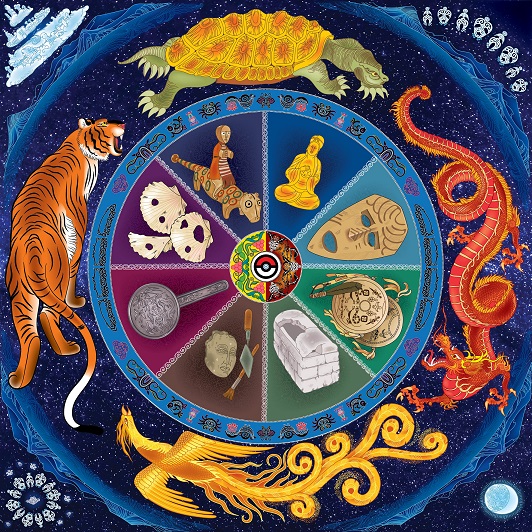
22 DECEMBER – 24 FEBRUARY / SMALL HALL
On December 22, the Small Hall of Zarya CCA will host the opening of “Stratum: Sanctuary,” an exhibition by the collective Hero4Hero. This exploratory initiative will offer an integral perspective on the cultural landscape of the Primorsky Krai. The exhibition, which will rely on works of augmented reality, will be open until February 24.
The collective uses the exhibition to explore the Primorye region as both a living thing, imbued with local meanings, and, at the same time, also an objective, tangible environment for human life.
Taking the emigration of people from the Far East of Russia as the point of departure for their research, the artists see the reason for the decrease in net migration in the population’s missing, unformed connection to the region. As one of the solutions to this problem, Hero4Hero proposes that the audience leaves their residency cards behind and restores life to the territory, discovering it as a place of strength. They should likewise leave behind the roles of colonizer and take on the mantle of the aboriginal, of those who do not conquer (that is, develop) the earth, but live (grow) on it, those who truly feel their roots in their place of residence, and not just the fleetingness of a forced stay here.
Engaging various semantic fields, such as the historical, ethnographical, archaeological and mythological, among others, the artists enter a dialogue with the territory itself. Using the tools of contemporary art, they translate the experience of space, throwing their own ethnic identity into question.
The artists parlay the space of the exhibition display into a sacred place, a laboratory of time, where symbols of the past, present and future mix with their own experience of the landscape in question. The audience is invited to interact with images of the region, restoring the balance between the territory and the perception of its space.
“Stratum: Sanctuary” is a continuation of research into the mythological reality of the Primorsky Krai that the collective first embarked on with their project SHAMAN SELFIE, which was shown at the Zarya Center for Contemporary Art in “One Northeast,” an international exhibition dedicated to the transcultural position of Vladivostok in Northeast Asia.
This project was realized with support from the Institute of History, Archaeology and Ethnography of the Peoples of the Far East, within the Far East department of the Russian Academy of Sciences, and Bikin National Park.
For Reference: With the project, “Stratum: Sanctuary,” the collective Hero4Hero offers an integral perspective on the cultural landscape of the Primorsky Krai. Taking the emigration of people from the Far East of Russia as the point of departure for their research, the artists see the reason for the decrease in net migration in the population’s missing, unformed connection to the region.
Hero4Hero proposes that the audience leaves their residency cards behind and restores life to the territory, discovering it as a place of strength. They should likewise leave behind the roles of colonizer and take on the mantle of the aboriginal, of those who do not conquer (that is, develop) the earth, but live (grow) on it, those who truly feel their roots in their place of residence, and not just the fleetingness of a forced stay here. The artists approach the geographical space of the territory not so much in its geographical interpretation, as through the emotional sphere as a “landscape of the soul” of man, a multidimensional space that can only be truly grasped by the heart and mind.
The artists parlay the space of the exhibition display into a sacred place, a laboratory of time, where symbols of the past, present and future mix with their own experience of the landscape in question. The audience is invited to interact with images of the region, restoring the balance between the territory and the perception of its space.
The project includes an element of augmented reality, which Hero4Hero uses to act as mediators between the territory and the people, stepping in as guides to the memory of the place, as a means of drawing attention to its cultural layers.
This project was realized with support from the Institute of History, Archaeology and Ethnography of the Peoples of the Far East, within the Far East department of the “Stratum: Sanctuary” is a continuation of research into the geophilosophy of Pacific
Russia (Primorye), that the collective first embarked on with their project SHAMAN SELFIE, which was shown at the Zarya Center for Contemporary Art in “One Northeast,” an international exhibition dedicated to the transcultural position of Vladivostok in Northeast Asia, which ran from October 7 until December 16, 2018.Russian Academy of Sciences, and Bikin National Park.
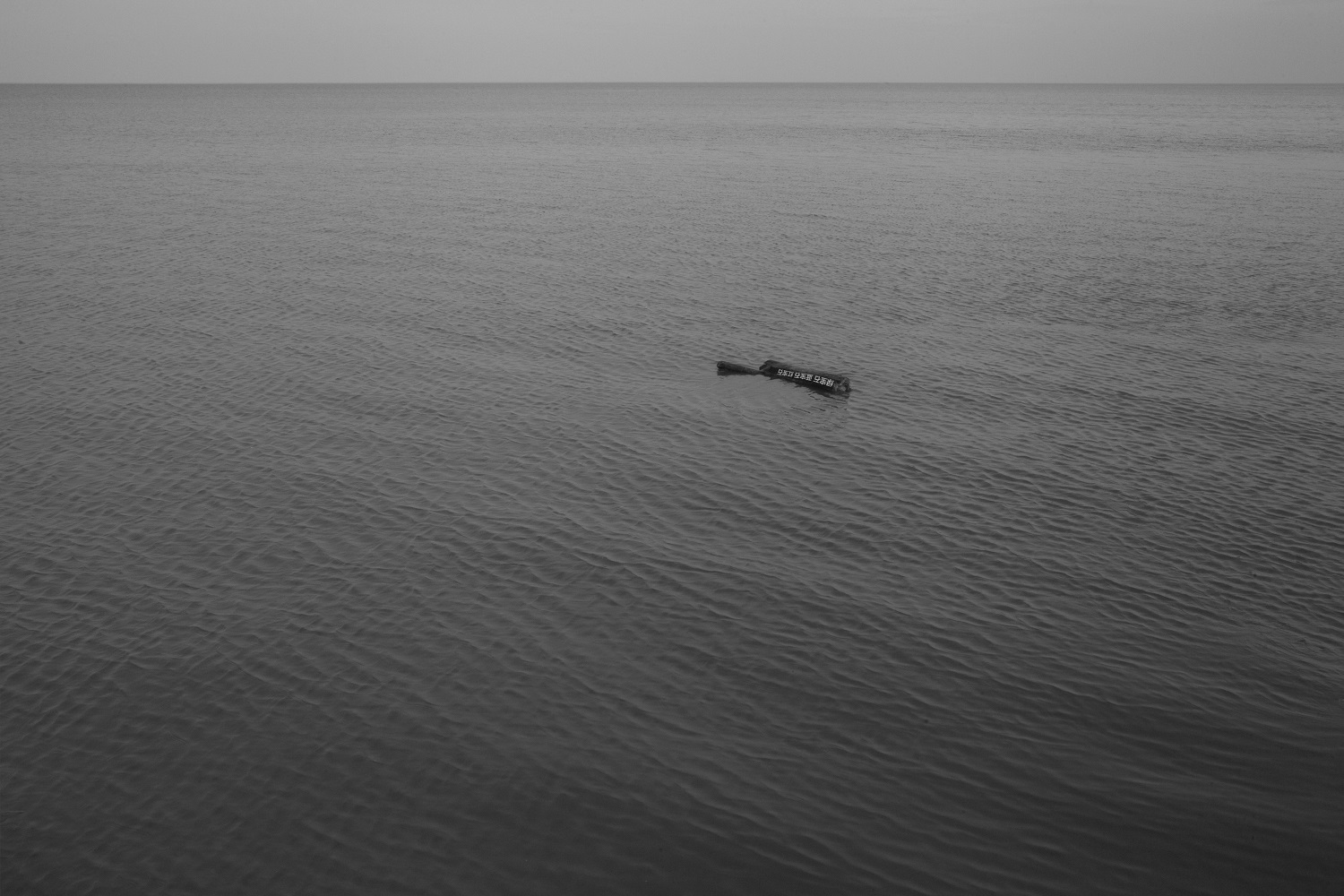 DEC 21, 2018 – JAN 14, 2019
DEC 21, 2018 – JAN 14, 2019
On December 21, at 7pm, the Zarya Air Workshop will celebrate the opening of “Invisible Shore,” an exhibition of photographs by Ma Haijiao (PRC), taken while the artist was in residence in Vladivostok. The exhibition will be on view until January 14, but to visit after the opening, you will need to first check in at the reception desk.
As the first Chinese artist to participate in the residency, Ma Haijiao reflects on the relationship between China and Russia, as it touches on both the history and present of Vladivostok. The two photographic series are based on the artist’s own impressions as he visited the city for the first time, serving as a kind of poetic interpretation of his experience.
As is well-known, a Chinese diaspora has lived in Vladivostok since the moment of its founding. From the end of the 19th century through the beginning of the 20th century, this diaspora was quite substantial, wielding considerable influence on the development of the economy and the urban lifestyle in general. After the 1930s, any connections between the city and China would be severed for decades, so that it was only in the 1990s that the markets started to fill up with Chinese recently that Vladivostok became a destination for Chinese tourists.
The history of this relationship, so specific to Vladovostok, served as the starting point for Ma Haijiao’s work. The series “Invisible Shore” mobilizes the fragments of Chinese text integrated into the city’s streets. During his first few excursions around Vladivostok, the artist was impressed by the abundance of Chinese phrases embedded within daily life as a familiar part of the visual appearance of the city. To come across one’s native tongue in such a big country was an unusual experience for the artist, who had yet to encounter this phenomenon in his travels.
At the same time, the Chinese text that one can find in Vladivostok has a very distinct character; among the examples are such phrases as the traditional "Wishing You Safety Wherever You Go" (a typical New Years’ greeting in China) or “Let It Go” (one of the basic principles of Buddhism) on a pendant in the interior of a taxi, or “Unlimited Meat” and "The Landscape Here is Beyond Compare" on a restaurant sign. The artist collected these assorted fragments of text and transferred them onto pieces of wood, which he released into the waters around the border areas.
Some of the photographs were taken on Lake Khanka, which runs along the border between China and the Russia Foundation. Others were taken in the waterways of the Bay of Peter the Great and the waters around Russky Island and Amur Bay. The artist sees water as the element connecting the two countries, since its constant fluidity allows it to endlessly flow back and forth from one shore to the other. The title of this series refers to the fact that somewhere beyond the horizon, on the opposite edge of the vast expanse of water lies another land, unknown to us, which is too far away for us to see.
The second series, “In a Quiet Place,” refers to the role of the Chinese diaspora within the history of the city. The artist imprints standard advertising banners with the phrase, "The worst thing that the people have done for us is that they all left here at once." This sentence is an homage to a quote from a book by Dmitry Ancha and Nelly Miz, titled The Chinese Diaspora in Vladivostok: The Pages of History, which describes the life of the Chinese population at the turn of the 20 th century: The worst thing that the Chinese have done for us is that they all left Vladivostok at once." It is well-known that the Chinese work force was indispensible to the city and representatives from various nationalities lived in close partnership with one another. However, the artist is putting his emphasis not so much on the significance of the Chinese diaspora, as on the universality of the statement that any nationality that abandons its home leaves palpable wounds behind. And one of the examples of this trauma could be the Far East in the 1930s, when, following the shift in the USSR’s policies regarding foreign residents, the large majority of the Chinese population was deported from the region.
This exhibitions of photographs by Ma Haijiao concludes the 2018 season of the residency program, which hosted 20 individual artists and collectives from 10 countries around the world.
*Ma Haijiao (born 1990) is a photographer and video artist who lives and works in Beijing. He studied at the China Academy of Art, where he received both a BA and later an MFA. His art practice takes up an enduring concern with life’s daily routines, and taking this as his starting point, he traces its logic to shape video narratives and other works. Among his recent exhibitions are “July in Berlin” (Migrant Bird Space, Berlin, 2018); “Happy Valley” (Tabula Rasa Gallery, Beijing, 2018); “Today's Yesterday,” the 1st Anren Biennale (Anren, Chengdu, 2017); “Message to the Future” (Canvas Contemporary Gallery, Amsterdam, 2017); “The New Normal” (Ullens Center for Contemporary Art, Beijing, 2017); “Semantic Satiation” (Tabula Rasa Gallery, Beijing, 2017); “Why Not Ask Again,” the 11 th Shanghai Biennale (Power Station of Art, Shanghai, 2016); and “Fly Without Wings” (V ART Center, Shanghai, 2015). Ma Haijiao was a finalist for the 10th Three Shadows Photography Award and a nominee for the A021xPORSCHE Young Chinese Artist of the Year in 2017 His work, Mr. Quan, can be found in the collection of/the Power Station of Art in Shanghai.
For more information about the artist, please refer to his website: www.mahaijiao.cn